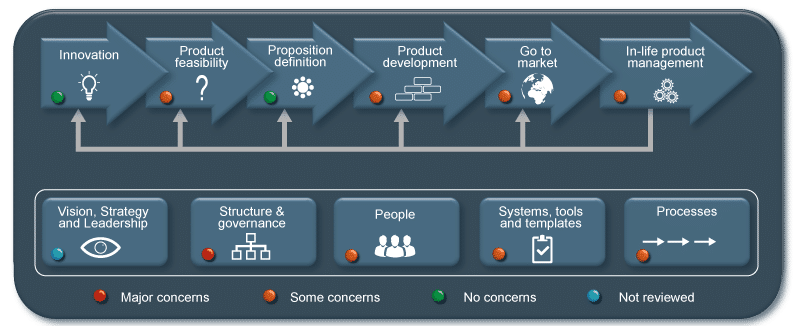
Do you ever feel like you’re stuck in the mud?
It takes much more time and effort to do things than it should.
Decisions take forever. Other parts of the business seem to be hindering rather than helping. People don’t seem aligned on priorities. It’s just not clear how to make progress.
Or maybe it’s worse than that…
Senior management becomes frustrated with the slow progress and unleashes fast track ‘strategic projects’ that torpedo your carefully laid plans. No one has faith in the standard processes and so everything happens through escalations, top-level priority calls, and political fighting. Relationships suffer. All the arguing actually slows things down rather than speeds things up.
In our experience it’s not usually individuals who are at fault (with one or two notable exceptions), it’s the processes and structures used to run the product management function that just isn’t working.
Any business that has product management has to work out what it’s there for and have the processes, organization, tools, people, and KPIs to make sure it delivers. It’s not rocket science. However because companies and personnel change over time we often find that no-one has really examined the product management function in detail to make sure it’s fit-for-purpose.
Over the last couple of years, we have developed a set of tools to review every aspect of the product management function. We’re happy to share one of these tools with you, an early version of our Product Management Assessment Framework. It’s illustrated in the diagram below.

Product Management Assessment Framework
The top line shows the sequence of stages in the product management lifecycle and along the bottom are the enablers that are needed to support the product management function. To use the framework we step through each of the boxes in turn and ask questions to explore how things work and tease out any issues.
The example above is for a company we reviewed last year. We use RAG (Red, Amber, Green) status buttons to highlight potential areas for improvement.
There was one key issue for them…
In the company structure, the split between product management and product marketing roles was not clear. No-one really knew who made the final decision on various product issues leading to conflict on some products and no-one picking up responsibility on others. This was relatively easy to sort out once it had been recognized as a problem.
We’ve used this framework many times to run reviews and assessments of the product management function in a company. A review is a quick and sharp analysis of the whole function in a one-to-one session with the person that heads up product management. An assessment is a more comprehensive audit and involves a series of meetings with key stakeholders and product managers to uncover, validate and explore issues.
Why don’t you use the Framework to do an internal review at a team meeting or off-site?
Walk through the framework and identify areas for improvement. Ask yourself what you’re doing well and what you could do better?
They say that recognizing a problem is half-way to solving it!
Ian Lunn
Director, Product Focus


Leave a comment